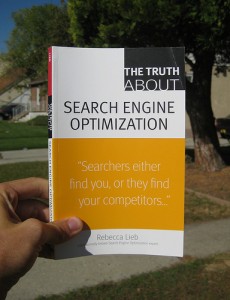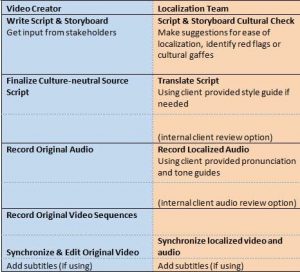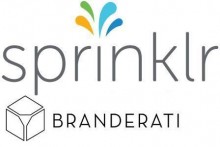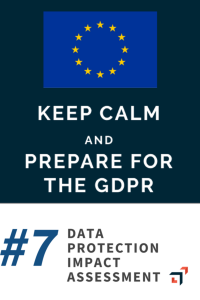As more consumers worry about privacy, a cookie-based approach to ad targeting is no longer an effective solution. Contributor Giovanni Strocchi explains why contextual relevance is the answer.
 Targeted ads work. If the rise of digital has taught marketers anything, it’s that advertising must be highly relevant to achieve any kind of cut-through, but there is one proviso: consumers are willing to accept targeted ads only if they do not intrude on their privacy.
Targeted ads work. If the rise of digital has taught marketers anything, it’s that advertising must be highly relevant to achieve any kind of cut-through, but there is one proviso: consumers are willing to accept targeted ads only if they do not intrude on their privacy.
According to a Millward Brown survey exploring video — the ad format of the moment — 41 percent of respondents are receptive to ads targeted on their interests, yet just 25 percent are receptive to ads that use their browsing history for basic retargeting.
It’s no coincidence that with marketers still relying on cookies, cookie synching and fingerprinting, the adoption of ad blockers continues to rise, with usage growing by 48 percent last year in the US alone.
So how can marketers take a cookie-less approach to ad targeting that delivers ultimate relevance, without compromising privacy? The answer lies in context.
What makes context crucial?
A key element of targeting that has been eclipsed by the fascination with cookie-based data and the pursuit of clicks is the connection between users and digital media. After all, users are not attracted to a page because of the ads it displays; they are drawn by content that captures their interest.
This makes the setting of an ad crucial to its success and something marketers must consider to achieve maximum relevance and minimal irritation.
Ads that blend in with their environment can be used to enhance the personal relevance of messaging without overstepping privacy boundaries; one study found 60 percent of users prefer ads targeted to what they are doing — content consumption included. This explains the increased popularity of native ads, which fully blend messaging with on-page content.
When ads do not take their surroundings into account, brands risk wasting campaign spend and damaging their reputation through inappropriate ad placements, as demonstrated earlier this year when ads supporting US presidential candidates appeared beside terrorist-related content on YouTube.
So where do current targeting methods fall short?
Although innovations in programmatic technology have brought greater efficiency and speed to digital ad targeting, automated delivery can still be hazardous. While marketers can define the audiences they want to reach through white listing, there is little transparency about the content and ads that appear alongside, resulting in reduced control over placements.
Our research indicates objectionable content — such as illegal drugs, alcohol and salacious topics — is present in one to four percent of web pages in the average DSP (demand-side platform), highlighting a significant risk: ads could be associated with content that’s damaging for the brand advertised.
What’s more, page analysis-based targeting solutions often rely on keywords — a practice that fails to allow for the way words change according to context, meaning ads can be matched to the right word but the wrong topic and sentiment.
And when it comes to cookies, the list of difficulties is even longer. Aside from privacy concerns causing users to delete them, cookies are also device-specific and often produce multiple identifiers for individuals — making it hard to define context and target ads.
Add these shortcomings to the fact that cookies expire, cannot be shared between apps and are reset each time a mobile browser is closed, and their benefits seem limited at best. Moreover, the cookie approach is largely ineffective for prospecting in a B2B environment — for example, finding an interest cookie for a 3-D printer is challenging, to say the least.
How can marketers ensure contextual relevance?
Linking ads solely with user browsing history or key phrases on the page is clearly not enough. To provide greater relevance, the industry needs more sophisticated targeting capabilities and content insights.
Taking into account contextual targeting — analyzing page-level content before ads are placed — is one way to guarantee an optimal fit. Going further than standard programmatic targeting and cookie-based methods, it uses semantic technology such as Natural Language Processing (NLP) to assess each page and establish the real meaning of every word — as well as the sentiment the words evoke — in the same way as the human brain.
When combined with behavioral analytics that explore how individual consumers interact with content, consumer data can be used to produce in-depth profiles detailing interests and preferences. This means marketers gain a comprehensive view of what the content on every page is about, how it will make users feel and which users will be interested in it — an ideal basis for both choosing the best placements and enhancing targeting relevance.
The modern digital environment can be a perilous place for marketers, where they must tread a fine line between providing absolute personalization and invading consumer privacy.
In a cookie-free, consumer-centric world, ensuring relevance will come down to how well marketers understand context — not just the meaning within the pages that contain their ads, but also the needs of the individual users the content attracts.
Only then can we regain audience confidence, start to fight back against the ad blockers and find the perfect balance between intrusiveness and relevance.
Some opinions expressed in this article may be those of a guest author and not necessarily Marketing Land. Staff authors are listed here.
Marketing Land – Internet Marketing News, Strategies & Tips
(47)
Report Post








